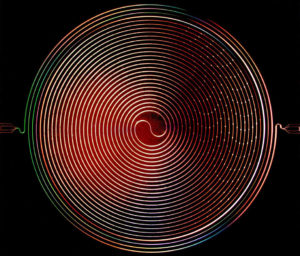Non-Degenerate Travelling Wave Parametric Amplifier (TWPA)

Previous designs of travelling wave parametric amplifiers (TWPAs) produce a non-uniform gain profile with a large zero-gain gap in the middle of the operational band.
Researchers at the University of Oxford have improved the design of existing TWPAs, resulting in a system which offers user control of the gain profile. Increased user control provides uniform gain across the entire bandwidth. In addition, these improvements have eliminated the zero-gain gap present in existing TWPAs. Such devices could have uses in any field where ultra-low noise amplification is required such as astronomy or readout of quantum circuits. Noise levels are predicted to be at or close to the quantum limit.
Parametric amplifier
Since their initial development in the early 20th century, parametric amplifiers have found use in low-noise radio receivers, such as those required for highly accurate radio telescopes. The principle of their operation relies on the non-linearity of the medium in which the waves are travelling to achieve amplification.
Travelling wave paramagnetic amplifier
Travelling wave paramagnetic amplifiers (TWPAs) are broadband versions of classical parametric amplifiers; however, they produce a non-uniform gain profile and have a significant zero-gain gap within their operational band.
User controlled gain profiles
Oxford researchers have made crucial modifications to a traditional TWPA to allow the user to control the gain profile. This additional level of control ensures that uniform gain can be achieved throughout the operational bandwidth. The new amplifier also eliminates the zero-gain gap that is present in other TWPAs whilst maintaining the wide-band and high gain characteristics.
The main benefits of this technology include:
- User controlled gain profile
- Uniform gain across the operational bandwidth
- Elimination of the zero-gain gap
- Wide band and high gain amplification
This invention could be used any situation where an ultra-low noise amplification method is needed (astronomical instruments, qubit experiments) in addition to possible uses as an ultra-low noise mixer.
Patent protection
Oxford University Innovation has filed a UK patent with the potential to be extended to international coverage and is looking for potential partners to aid in the commercialisation of the technology.
about this technology

